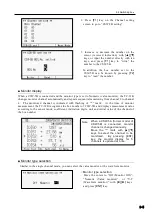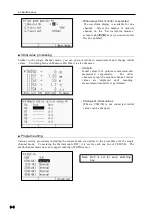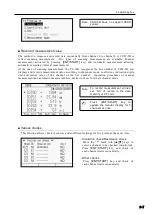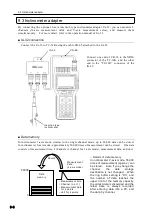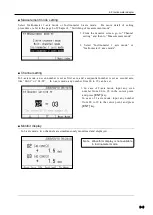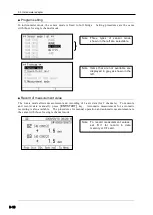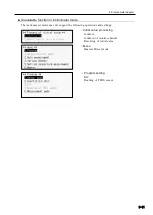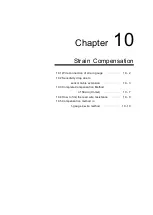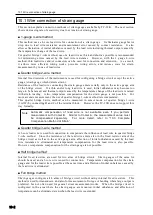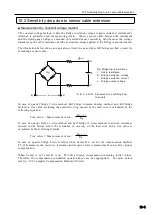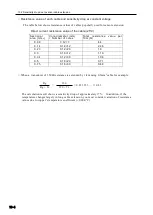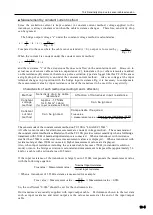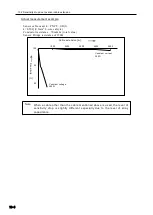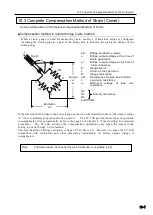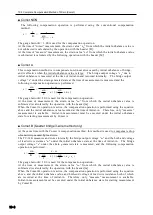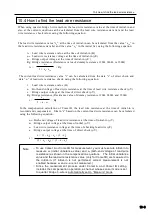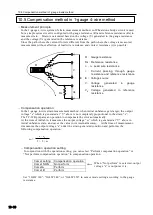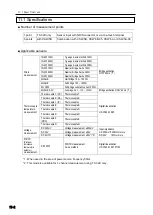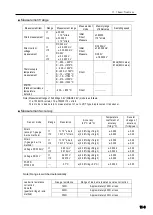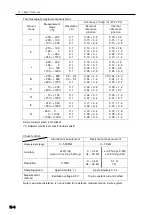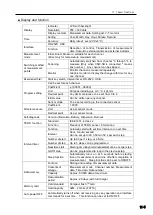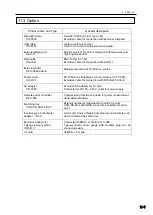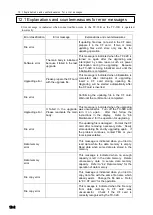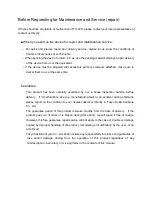
10.3 Complete Compensation Method of Strain (Comet)
10-8
■
Comet NON
The following compensation operation is performed using the conventional compensation
method:
ε = ×
The gauge factor K
=
2.00 is used for the compensation operation.
At the time of “direct” measurement, the strain value “ε
D
” from which the initial unbalance value is
not subtracted is calculated by the operation with the header [D]:
At the time of “measure” measurement, the strain value “ε
M
” from which the initial unbalance value
is subtracted is calculated by the following operation with the header [M]:
■
Comet A
This compensation method is to compensate non-linear error cased by initial unbalance of bridge,
and is effective when the initial unbalance value is large. The bridge output voltage “e
0
” due to
initial unbalance is measured at the time of initial-in and recorded internally. The bridge output
voltage “e” under the strain generated state at the time of measurement is measured and the
following compensation operation is performed:
ε = ×
The gauge factor K=2.00 is used for the compensation operation.
At the time of measurement, the strain value “ε
m
” from which the initial unbalance value is
subtracted is calculated by the operation with the header [m]:
When the Comet A operation is active, the compensation operation is performed using the equation
above and the initial unbalance value recorded at the time of initial-in. Therefore, only “measure”
measurement is available. Initial-in measurement must be executed under the initial unbalance
state for starting measurement by Comet A.
■ Comet B (Quarter bridge 3-wire method only)
At the same time with the Comet A compensation method, this method is used to compensate drop
of sensitivity caused by lead wire.
The TC-32K measures and stores internally the bridge output voltage “e
0
” and the both-end voltage
of lead wire resistance “e
r
” under the initial unbalance state at the time of initial-in. The bridge
output voltage “e” under the strain generated state is measured, and the following compensation
operation is performed:
ε = ×
The gauge factor K=2.00 is used for the compensation operation.
At the time of measurement, the strain value “ε
m
” from which the initial unbalance value is
subtracted is calculated by the operation with the header [m]:
When the Comet B operation is active, the compensation operation is performed using the equation
above, and the initial unbalance value and both-end voltage of lead wire resistance both of which
are recorded at the time of initial-in. Therefore, only “measure” measurement is available.
Initial-in measurement must be executed under the initial unbalance state for starting measurement
by Comet B.
ein
2
――― - e
e
2
K
e - e
0
ein
K
(
-
e )
×
(
+ e
0
)
ein
2
ein
2
e - e
0
ein
K
(
-
e )
×
(
+ e
0
- e
r
)
ein
2
ein
2
Summary of Contents for TC-32K
Page 1: ...O p e r a t i o n M a n u a l TC 32K HANDHELD DATA LOGGER...
Page 8: ...Chapter 12 Error Message 12 1 Explanations and countermeasures for error messages 12 2...
Page 9: ...Chapter 1 Overview 1 1 Overview 1 2 1 2 Features 1 2 1 3 Details about each part 1 3...
Page 22: ...2 5 Operation outline 2 10 memo...
Page 23: ...Chapter 3 Sensor Connection 3 1 Sensor connection 3 2...
Page 65: ...5 10 Measurement auxiliary setting 5 28 memo...
Page 78: ...6 5 Recording in data memory and CF card 6 13 memo...
Page 86: ...7 7 Remote measurement 7 8 memo...
Page 98: ...8 7 Factory setting 8 12 memo...
Page 127: ...11 4 Outside drawing 11 8 11 4 Outside drawing Unit mm...
Page 128: ...Chapter 12 Error Message 12 1 Explanations and countermeasures for error messages 12 2...

